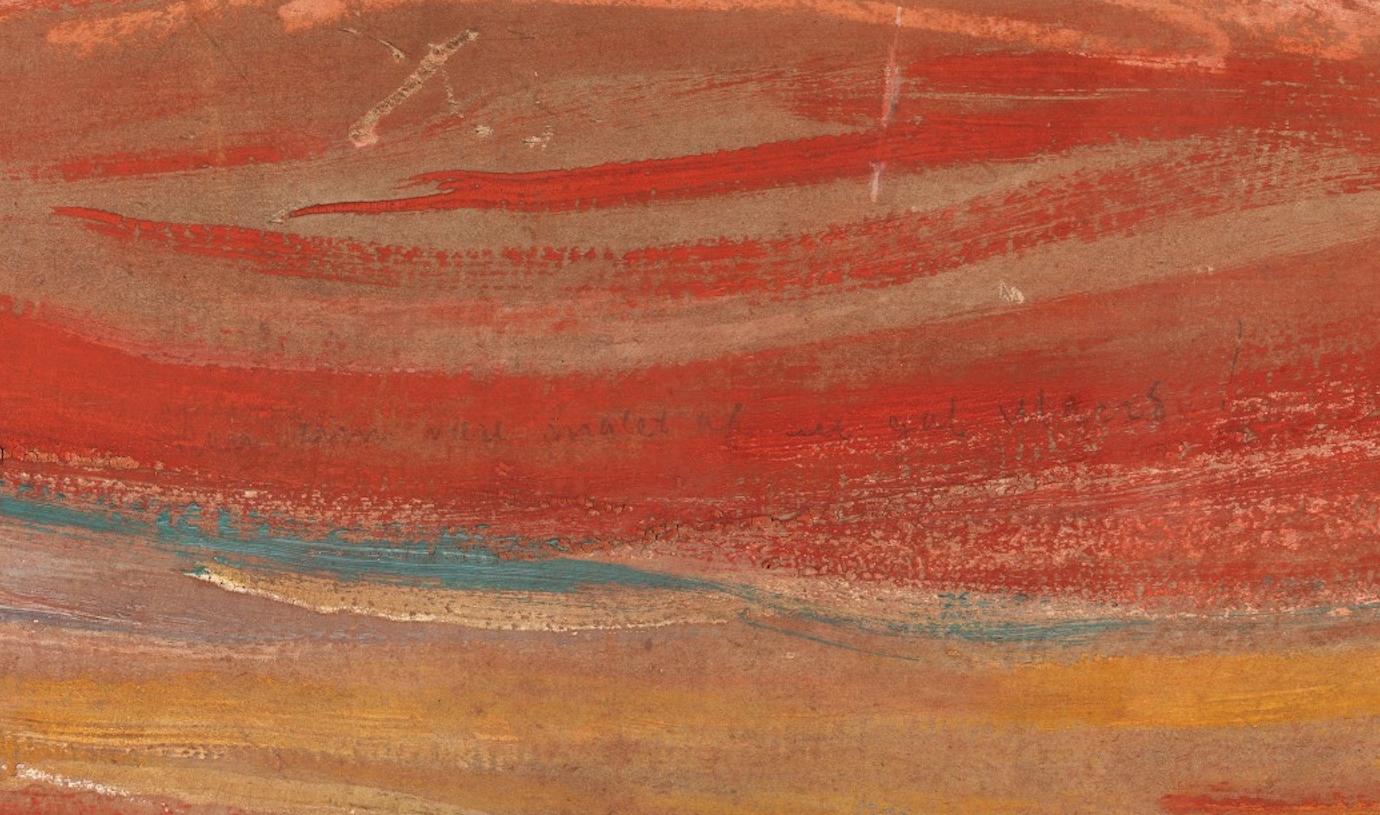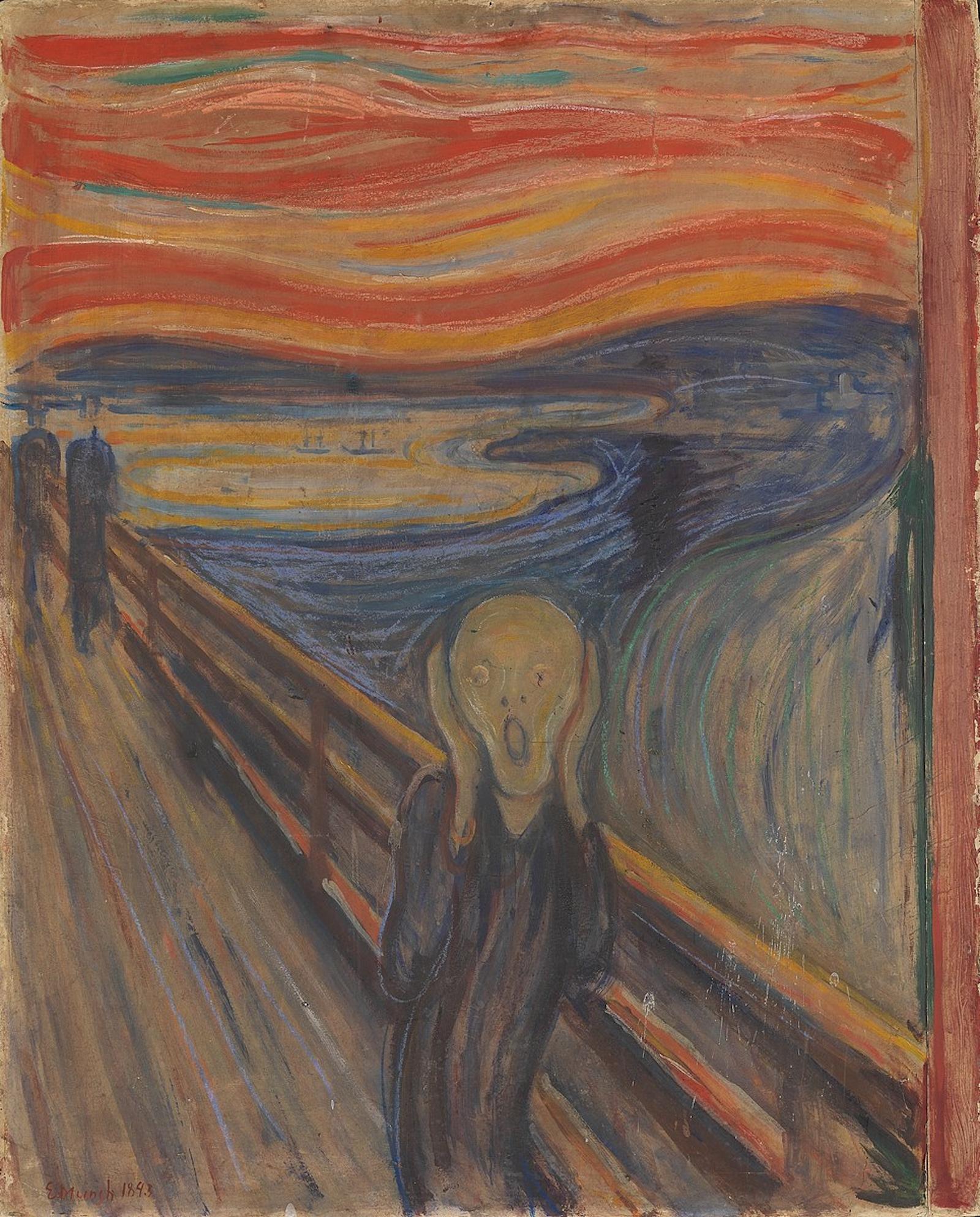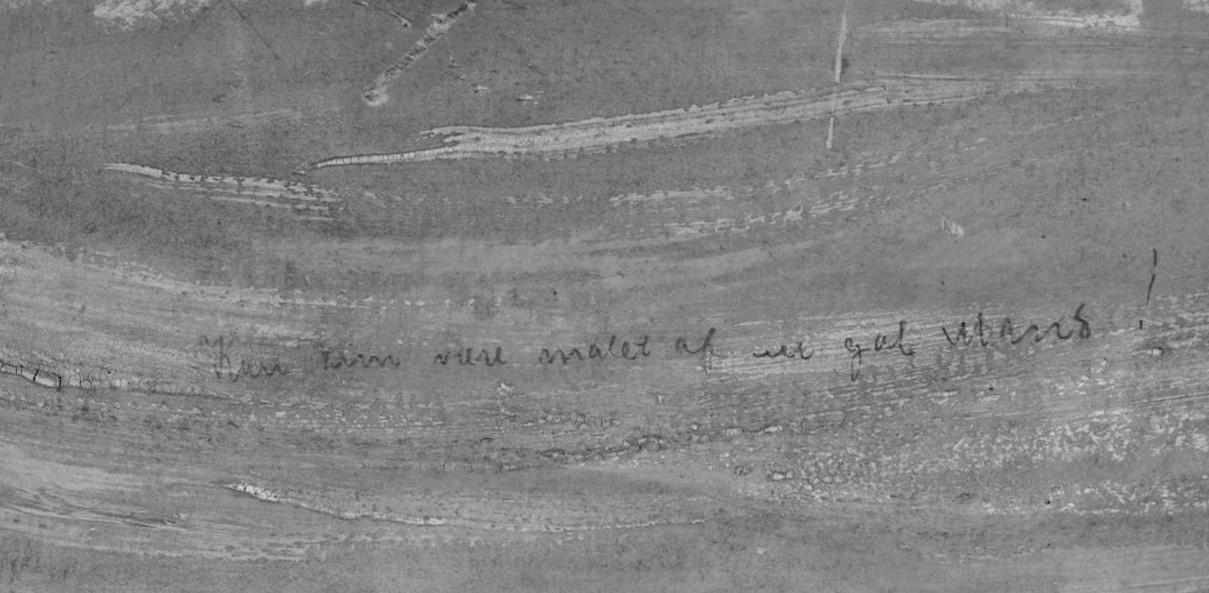The museum, which is set to open in 2022, is the product of several museum closings. Artworks from former museums including Norway's National Gallery, Museum of Architecture, Museum of Decorative Arts and Design, and Museum of Contemporary Art have been compiled and will exist within this new museum’s collection.
The Scream is apparently one of several masterpieces that have been conserved and examined by the National Museum since the old National Gallery closed. As part of this examination, curators used infrared technology to assess the message and determined that it was indeed added after the painting was finished. Infrared photography also made the inscription stand out brilliantly against the background, making detailed analysis of the handwriting itself possible for the first time.
Curators are now confident that the handwriting on the painting matches that of the artist. Additionally, Munch’s diary entries show that he was deeply affected by and fixated on the public ponderings of his mental health. This kind of attention would likely put a strain on anyone's mental health. And such talk would be especially difficult to swallow if generated by the release of one's own precious artwork.































